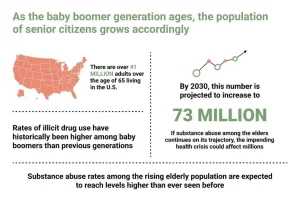
It also increases the risk of blackouts, especially on an empty stomach. During this time, a person may do things that they do not remember later. It is commonly misused among individuals of all ages, resulting in significant health, legal, and socio-economic damage. Alcohol use disorder (AUD) is a chronic brain disorder that makes it difficult to control alcohol use, even when it’s causing problems. Drinking alcohol during pregnancy can lead to symptoms of fetal alcohol spectrum disorders (FASD).

Epidemiology of marijuana smoking and road traffic accidents

“The good news is that earlier stages of steatotic liver disease are usually completely reversible in about four to six weeks if you abstain from drinking alcohol,” Dr. Sengupta assures. In Australia, alcoholic beverages are required by law to state the approximate number of standard drinks they contain on the label. To avoid the negative effects of alcohol, you should practice safe drinking and manage your alcohol intake. If blood alcohol concentration is higher than 0.4, there is a 50 percent chance of death. The body absorbs alcohol relatively quickly, but it takes longer to get the alcohol out of the body. Consuming several drinks in a short time causes the alcohol builds up in the body.
Alcohol misuse
The first are cognitive studies that measure the effects of smoking marijuana on cognitive processes that are considered to be integral to safe driving. The second are experimental studies on the collision risk of people under the influence of marijuana. The third are descriptive and analytic epidemiological studies on the relationship between cannabis use and accidents, usually performed through drug testing of injured drivers.
Adults drinking seven to 14 drinks per week could expect, on average, a six-month shorter life expectancy as of age 40

Drivers with BACs of .08 g/dL or higher involved in fatal crashes were 4 times more likely to have prior convictions for driving while impaired than were drivers with no alcohol (6% and 2%, respectively). Every day, about 37 people in the United States die in drunk-driving crashes — that’s one person every 39 minutes. In 2022, 13,524 people died in alcohol-impaired driving traffic deaths.
- Among African American drivers, the proportion with positive BACs declined from 6.0 to 3.6 percent.
- Though there are more than 82 million drinking–driving trips in a given year at BACs of 0.08 percent and higher (and 10 percent of drinking–driving trips are at BACs of 0.08 percent and higher), there are only 1.5 million arrests for drinking and driving each year.
- Drinking and driving, also referred to as driving under the influence (DUI), involves operating a vehicle with a blood alcohol content (BAC) of at least 0.08%.
- Alcohol can disrupt fetal development at any stage during a pregnancy—including at the earliest stages and before a woman knows she is pregnant.
- In the United States alone, an average of 29 individuals lose their lives daily due to road traffic accidents involving intoxicated drivers (National Highway Traffic Safety Administration [NHTSA], 2019).
- It can make driving a car unsafe—just like driving after drinking alcohol.
Fast facts about alcohol
Organs known to be damaged by long-term alcohol misuse include the brain and nervous system, heart, liver and pancreas. After drinking 10 to 12 units of alcohol, your co-ordination will be highly impaired, placing you https://ecosoberhouse.com/ at serious risk of having an accident. The high level of alcohol has a depressant effect on both your mind and body, which makes you drowsy. Regular, heavy alcohol consumption can also result in unhealthy weight gain.
Healthdirect 24hr 7 days a week hotline
As a result, some states have zero-tolerance laws for drugged driving. This means a person can face charges for driving under the influence (DUI) if there is any amount of drug in the blood or urine. Many states are waiting to develop laws until research can better define blood levels that indicate impairment, such as those they use with alcohol.
- A systematic review of randomized controlled trials to reduce alcohol dependence and abuse among the general population (Dinh-Zarr et al. 1999) has found beneficial effects in reducing not only alcohol consumption but also drinking and driving offenses.
- In 2022, there were 2,337 people killed in alcohol-related crashes where a driver had a BAC of .01 to .07 g/dL.
- But there’s plenty of research to back up the notion that alcohol does lead to weight gain in general.
- A first-time offense can cost the driver upwards of $10,000 in fines and legal fees.
- Alcohol use can cause sexual dysfunction, such as difficulty achieving or maintaining an erection and decreased sexual sensations.

An alcohol overdose occurs when there is so much alcohol in the bloodstream that areas of the brain controlling basic life-support functions—such as breathing, heart rate, and temperature control—begin to shut down. Symptoms of alcohol overdose include mental confusion, difficulty remaining conscious, vomiting, seizure, trouble breathing, slow heart rate, clammy consequences of drinking and driving skin, dulled responses (such as no gag reflex, which prevents choking), and extremely low body temperature. Alcohol use, especially excessive alcohol consumption, can harm your physical and mental health. From damaging vital organs to impairing brain function and jeopardizing relationships, the negative consequences of excessive alcohol use are far-reaching.
- The evaluation consists of 11 yes or no questions that are intended to be used as an informational tool to assess the severity and probability of a substance use disorder.
- In 1999, researchers conducted a nationwide, random telephone survey of 5,733 adults age 16 and older to collect information about drinking and driving behavior and attitudes, and enforcement of drinking and driving laws (Royal 2000).
- However, AVs are expected to remain between Levels 2 and 3 for a few decades (Hedlund, 2016, Kyriakidis et al., 2019), which require drivers to stay in the loop for possible requests to resume manual vehicle control (i.e., takeover) when the system can no longer perform the driving task.
The impact of mental states on semi-autonomous driving takeover performance: a systematic review
The effects of specific drugs on driving skills differ depending on how they act in the brain. For example, marijuana can slow reaction time, impair judgment of time and distance, and decrease coordination. Drivers who have used cocaine or methamphetamine can be aggressive and reckless when driving. Certain kinds of prescription medicines, including benzodiazepines and opioids, can cause drowsiness, dizziness, and impair cognitive functioning (thinking and judgment). Alcohol poisoning occurs when the body has consumed more alcohol in a short period of time than it can process.
